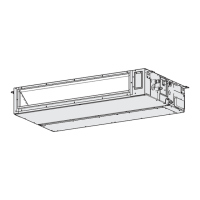F568247
Operating Instructions
Air Conditioner
* Shows U1 type (4-Way Cassette)
(3-phase)
—
—
—
—
U-71PE1E8
U-100PE1E8
U-125PE1E8
U-140PE1E8
Model No.
Indoor Units
4-Way
Cassette
S-36PU1E5
S-45PU1E5
S-50PU1E5
S-60PU1E5
S-71PU1E5
S-100PU1E5
S-125PU1E5
S-140PU1E5
Indoor Units
Low Silhouette
Ducted
S-36PF1E5
S-45PF1E5
S-50PF1E5
S-60PF1E5
S-71PF1E5
S-100PF1E5
S-125PF1E5
S-140PF1E5
Outdoor Units
Single Split
(Single-phase)
—
—
—
U-60PE1E5
U-71PE1E5
U-100PE1E5
U-125PE1E5
U-140PE1E5
ENGLISH
FRANÇAIS
ESPAÑOL
DEUTSCH
ITALIANO
NEDERLANDS
PORTUGUÊS
EΛΛΗΝΙΚΆ
БЪЛГАРСКИ
РУССКИЙ
УКРАЇНСЬКА
2 ~ 13
14 ~ 25
26 ~ 37
38 ~ 49
50 ~ 61
62 ~ 73
74 ~ 85
86 ~ 97
98 ~ 109
110 ~ 121
122 ~ 134
Before operating the unit, read these operating instructions thoroughly and keep them for future reference.
Avant d’utiliser l’appareil, lisez ce mode d’emploi dans son intégralité et conservez-le pour toute référence ultérieure.
Bevor Sie das Gerät in Betrieb nehmen, lesen Sie bitte diese Bedienungsanleitung aufmerksam
durch und bewahren Sie sie für die künftige Verwendung auf.
Prima di utilizzare l’unità, leggere a fondo queste istruzioni per l’uso e conservarle come riferimento futuro.
Преди да започнете експлоатация на този уред, прочетете внимателно тези инструкции и ги
запазете, за да можете да правите справки с тях и в бъдеще.
Lees deze gebruiksinstructies goed door voor u het apparaat gebruikt en bewaar ze voor toekomstig gebruik.
Antes de utilizar o aparelho, leia completamente este manual de instruções e guarde-o para futuras referências.
Перед использованием этого устройства внимательно прочитайте настоящую инструкцию по
эксплуатации и сохраните ее для дальнейших справок.
Уважно прочитайте цю інструкцію з експлуатації перед тим, як увімкнути пристрій, та
збережіть її на майбутнє.
Πριν θέσετε τη μονάδα σε λειτουργία, διαβάστε πολύ καλά αυτές τις οδηγίες χρήσης και
διατηρήστε τις για μελλοντική αναφορά.
Antes de operar la unidad, lea atentamente estas instrucciones de funcionamiento y guárdelas para futuras consultas.
© Panasonic Corporation 2012
Unauthorized copying and distribution is a
violation of law.
* Shows F1 type (Low Silhouette Ducted)



